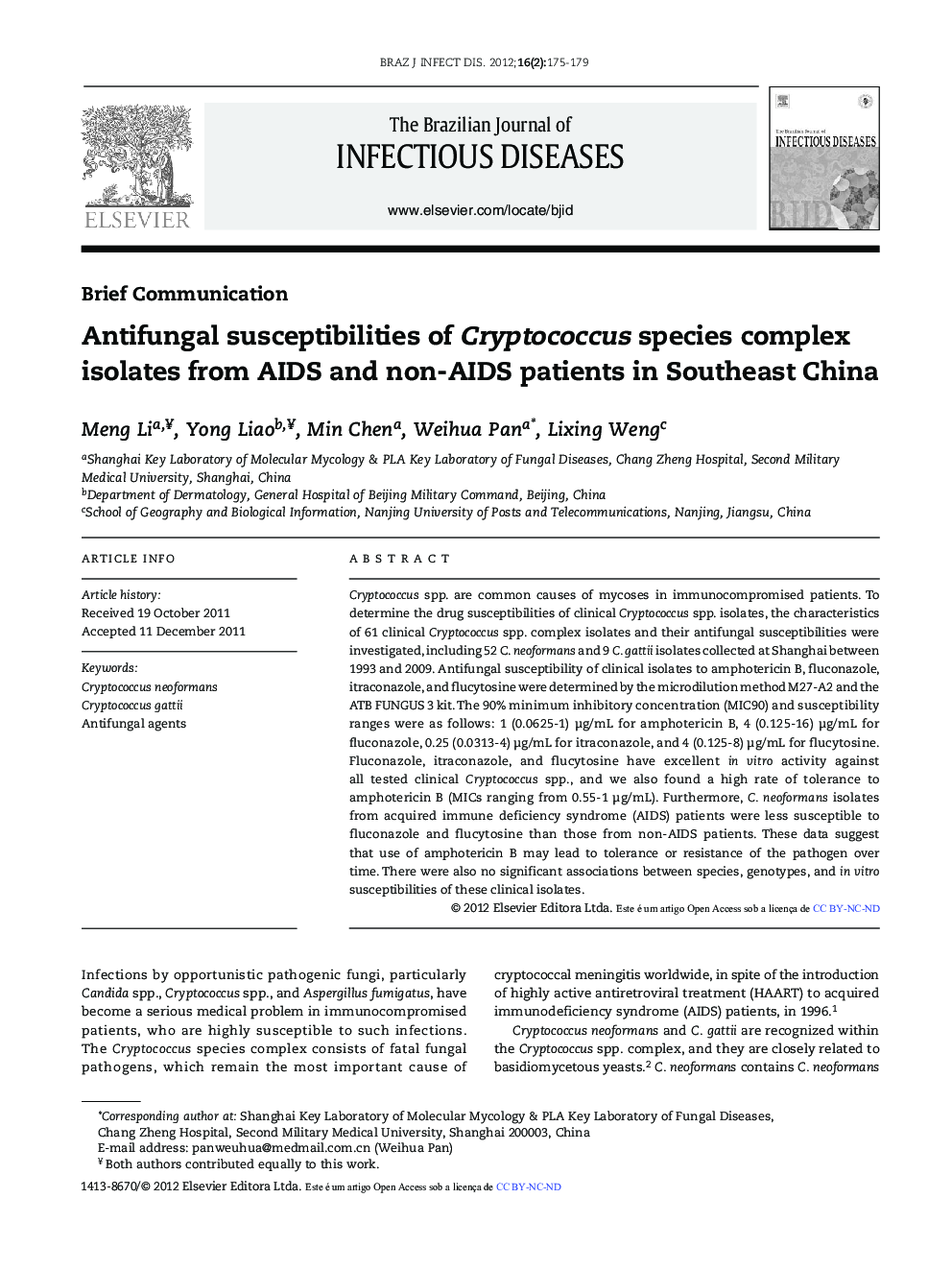| کد مقاله | کد نشریه | سال انتشار | مقاله انگلیسی | نسخه تمام متن |
|---|---|---|---|---|
| 3344152 | 1591208 | 2012 | 5 صفحه PDF | دانلود رایگان |

Cryptococcus spp. are common causes of mycoses in immunocompromised patients. To determine the drug susceptibilities of clinical Cryptococcus spp. isolates, the characteristics of 61 clinical Cryptococcus spp. complex isolates and their antifungal susceptibilities were investigated, including 52 C. neoformans and 9 C. gattii isolates collected at Shanghai between 1993 and 2009. Antifungal susceptibility of clinical isolates to amphotericin B, fluconazole, itraconazole, and flucytosine were determined by the microdilution method M27-A2 and the ATB FUNGUS 3 kit. The 90% minimum inhibitory concentration (MIC90) and susceptibility ranges were as follows: 1 (0.0625–1) μg/mL for amphotericin B, 4 (0.125–16) μg/mL for fluconazole, 0.25 (0.0313–4) μg/mL for itraconazole, and 4 (0.125–8) μg/mL for flucytosine. Fluconazole, itraconazole, and flucytosine have excellent in vitro activity against all tested clinical Cryptococcus spp., and we also found a high rate of tolerance to amphotericin B (MICs ranging from 0.55–1 μg/mL). Furthermore, C. neoformans isolates from acquired immune deficiency syndrome (AIDS) patients were less susceptible to fluconazole and flucytosine than those from non-AIDS patients. These data suggest that use of amphotericin B may lead to tolerance or resistance of the pathogen over time. There were also no significant associations between species, genotypes, and in vitro susceptibilities of these clinical isolates.
Journal: The Brazilian Journal of Infectious Diseases - Volume 16, Issue 2, March–April 2012, Pages 175-179